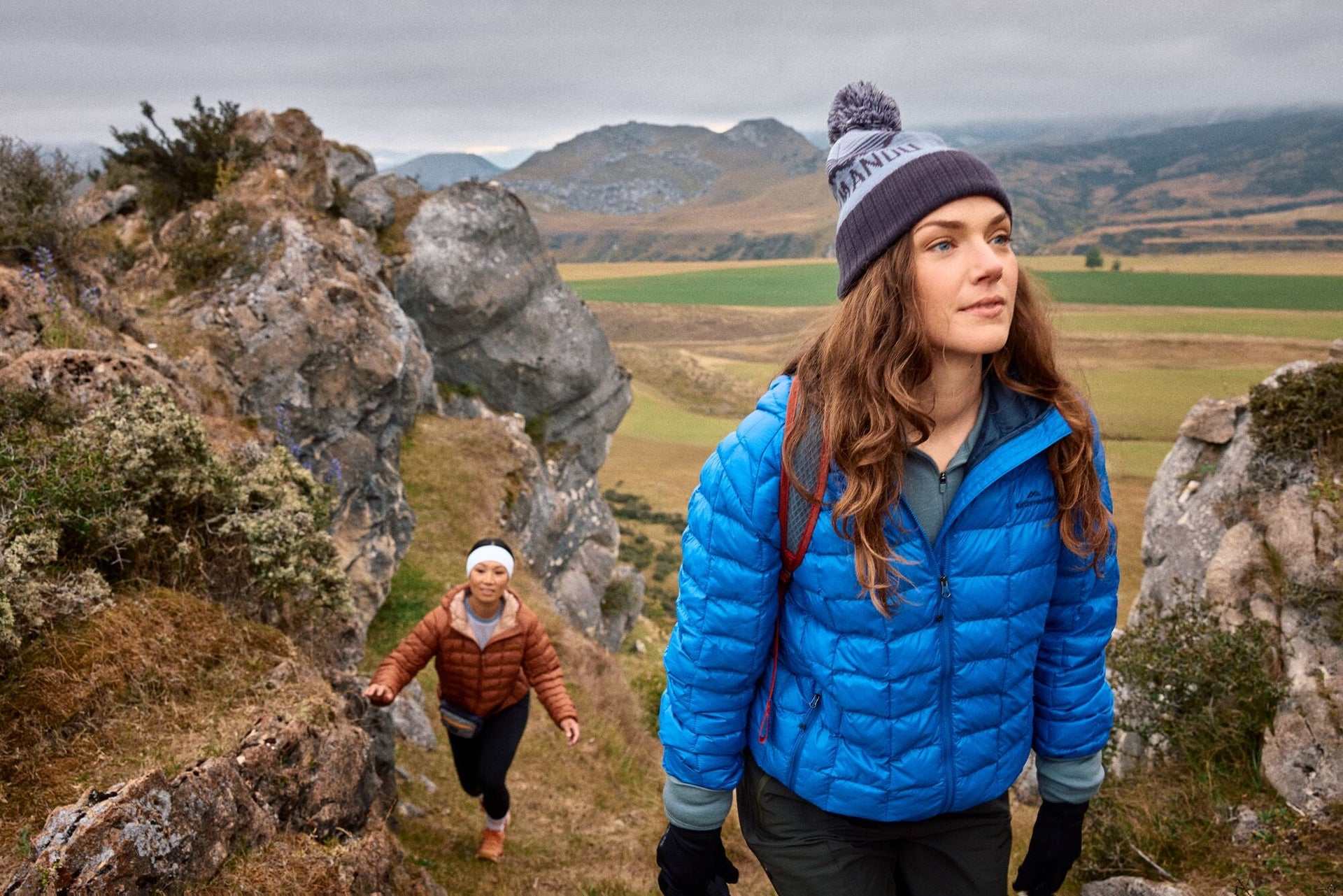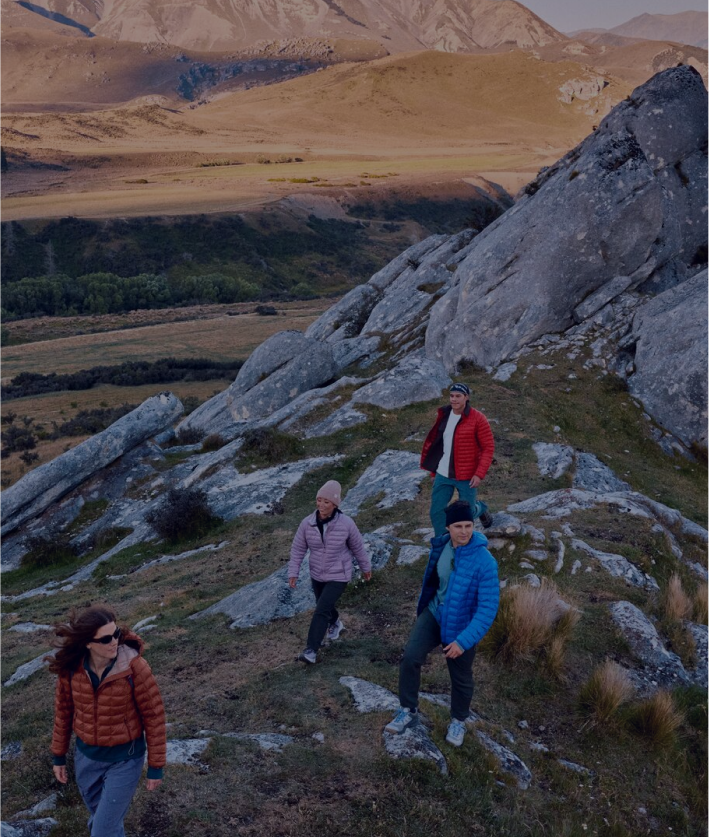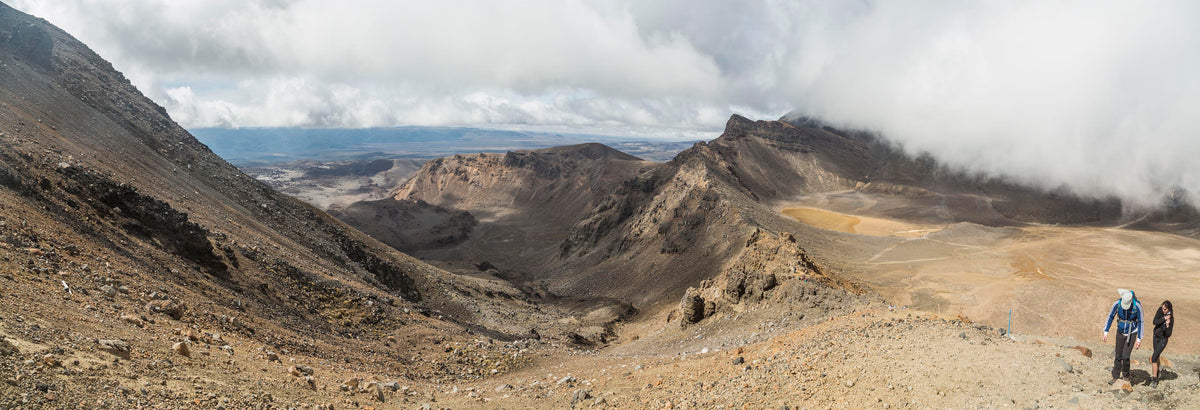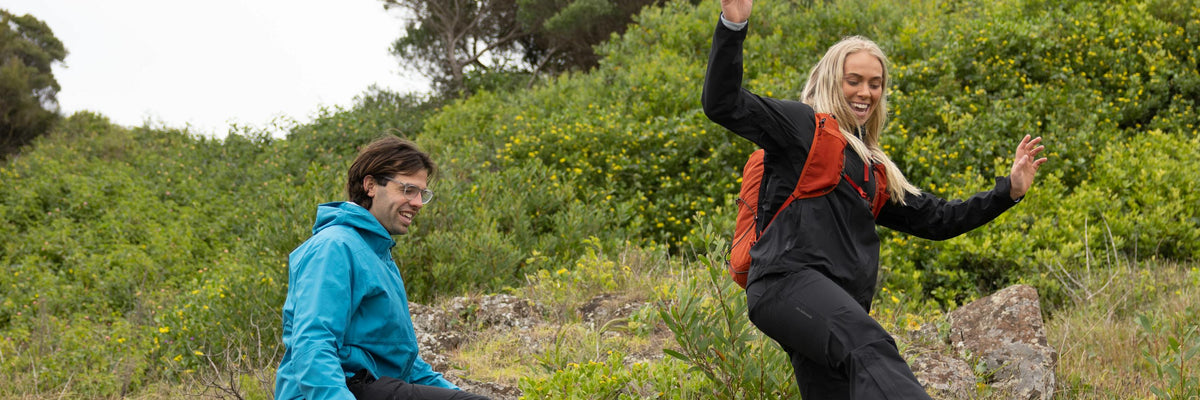Trail Running for Beginners: Your Step-by-Step Guide
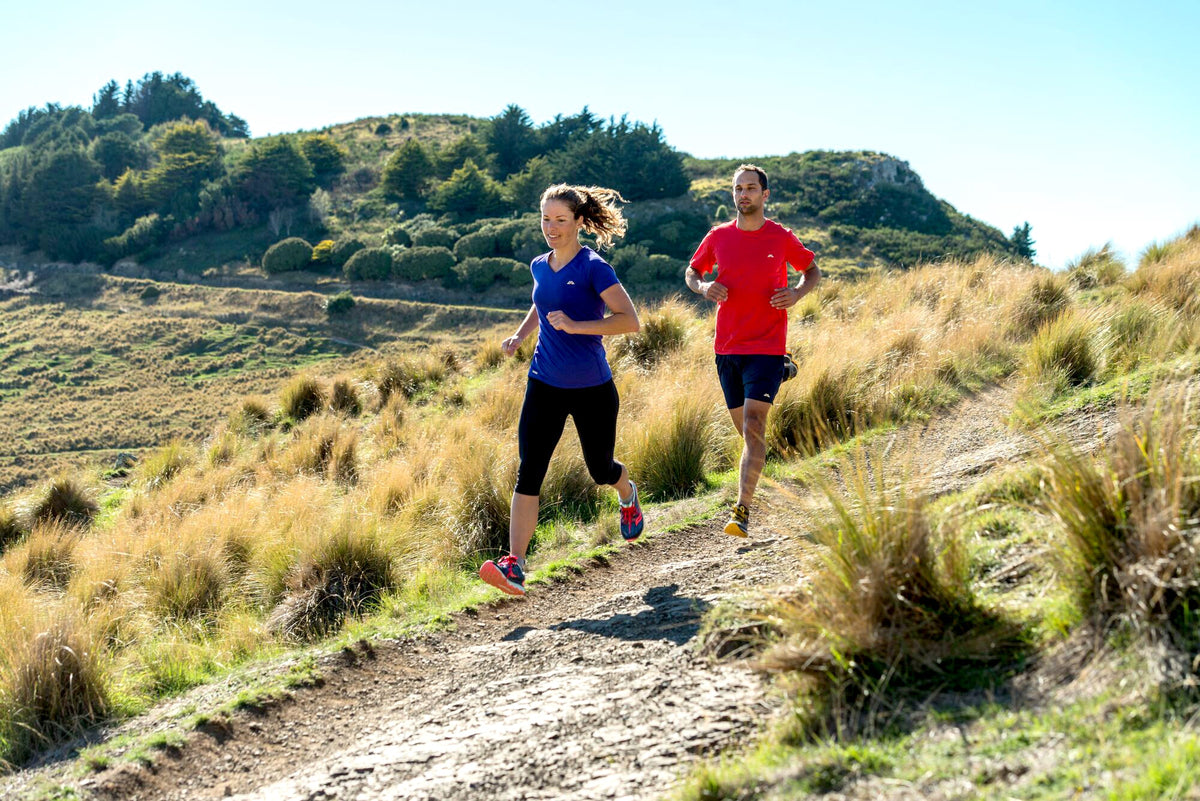
Are you a trail running beginner? If you've ever felt the call of the great outdoors and the urge to explore beyond the confines of paved streets, then this beginner's guide written by Her Trails Co-Founder Sam Gash is your ticket to lacing up your shoes and confidently embarking on your trail adventure. Whether you're a complete novice or a seasoned runner looking to switch things up, trail running offers a refreshing experience that will keep you coming back for more. So, let's dive into the world of trail running and get you ready to embrace those trails with confidence!
Much like road running, trail running is a healthy and accessible activity with minimal gear requirements. However, the trail running experience can vary from a 5k loop around your local city park to a multi-day mountain running adventure through challenging terrains and rugged passes.
Here are some reasons why trail running is gaining popularity:
1. Enhanced Mental Well-being: Trail running allows you to disconnect from the hustle and bustle of daily life and immerse yourself in the serenity of nature. The calming and rejuvenating effect of natural surroundings can reduce stress, anxiety, and promote mental clarity.
2. Varied Terrain: Unlike monotonous pavement, trail running introduces you to a variety of surfaces, including dirt paths, rocky trails, and forested routes. This diversity challenges your body in unique ways, enhancing your balance, agility, and overall fitness.
3. Lower Impact: The softer terrain of trails is gentler on your joints compared to the unforgiving pavement. This reduced impact makes trail running an excellent choice for those looking to minimize the risk of injuries, particularly on knees and ankles.
4. Exploration and Adventure: Trail running sparks a spirit of exploration and adventure, turning each run into a journey filled with the excitement of uncovering new trails, reaching scenic summits, and experiencing the untamed beauty of nature.
5. Connection with Nature: Being surrounded by natural beauty and wildlife while you run can be profoundly rewarding. The sights, sounds, and scents of the great outdoors add an enriching dimension to your running experience.
Now, let's dive into the step-by-step guide to get you started with trail running:
Step 1: Finding Trails and Staying Safe
Before you can hit the trails, you need to know where to find them.
Here are some ways to discover great trail running locations:
- Local Parks and Nature Reserves: Start by exploring your local parks and nature reserves. Many of these areas have well-maintained trails that are perfect for beginners.
- Trail Running Apps: There are several trail running apps available that can help you discover new trails in your area. Apps like AllTrails and Strava can provide information on trail length, difficulty, and user reviews.
- Ask Fellow Runners: Reach out to fellow runners or join local running groups to get recommendations on the best trails in your area. Experienced runners can offer valuable insights into their favorite routes.
- Online Community Groups: Join online community groups for runners. These are friendly platforms where runners from all backgrounds can connect and support each other. Remember, there's no such thing as a silly question; everyone was a beginner once.
- Visit Running Stores: Local running stores often have knowledgeable staff who can recommend nearby trails and provide information on trail conditions.
- Kathmandu Store: If you're near a Kathmandu store, consider visiting. They can provide recommendations on local trails and offer valuable insights into trail running.
Once you've identified potential trails, it's essential to research each one to determine its suitability for your skill level and preferences. Pay attention to factors like trail length, elevation gain, and terrain type. As a beginner, start with easier trails and gradually progress to more challenging routes as you gain experience and confidence.
Safety Considerations:
- Always inform someone of your running plans, including your route and estimated return time.
- Opt for out-and-back routes, particularly as a beginner, to minimise the risk of getting lost.
- Carry a fully charged phone with you and keep it easily accessible for emergencies.
- Start with simpler trail running adventures and gradually progress to more challenging routes as your experience and confidence grow.
Step 2: Gear Up
When you embark on your trail running adventure, your choice of footwear becomes your most crucial gear. It's the only piece of equipment standing between your body and the terrain below. Trail-running shoes are purpose-built to provide the support and protection you need on uneven and rugged trails. They offer superior grip, stability, and safeguarding features, making them an indispensable part of your gear.
Your choice of trail-running shoe should be guided by the specific terrain you plan to tackle. Whether you're facing rocky paths, muddy stretches, hilly routes, or a mix of these elements, your shoe selection should match the demands of your chosen trail.
It's important to note that what works perfectly for one trail runner may not be the ideal fit for another. Trail-running shoes are a personal choice influenced by various factors, including foot shape, running style, and personal preferences. So, don't solely rely on recommendations from friends or fellow runners.
Also, remember that many trail runners choose to size up their shoes slightly to better accommodate the unique demands of trail running. This additional room can enhance comfort during longer runs and allow your feet to naturally swell without causing discomfort or blisters. Finding the right balance between a snug fit and sufficient room to move is key.
Step 3: Pace Yourself and Embrace Humility
As you delve deeper into trail running, it's essential to let go of any fixation on pace and ego. Trail running is a different beast compared to road running, and you'll encounter various challenges and surprises along the way.
Here's how to navigate this aspect of trail running:
- Forget About Pace: Unlike road running, where you can closely monitor your pace on flat, predictable surfaces, trail running introduces uneven terrain, elevation changes, and natural obstacles. Your pace on trails will vary significantly, and that's perfectly normal. Instead of aiming for a specific pace, focus on effort and adaptability.
- Embrace Humility: Trail running can humble even the most experienced runners. Don't be discouraged if you find yourself walking uphill or slowing down on technical descents. Every runner, regardless of skill level, encounters moments when they need to adjust their speed or approach. Embrace these challenges as opportunities for growth and learning.
- Listen to Your Body: Pay close attention to how your body feels during your trail runs. If you need to walk a steep climb or navigate a tricky section cautiously, do so. Your safety and well-being should always be the top priority. Pushing yourself too hard can lead to injuries or burnout.
- Learn from Experience: Trail running is a skill that develops over time. Embrace each run as a chance to learn and improve. As you gain experience, you'll become more confident in your abilities and better equipped to handle various trail conditions.
By letting go of the need for a specific pace and embracing humility on the trails, you'll find greater enjoyment in the sport of trail running. It's about connecting with nature, challenging yourself, and growing as a runner, rather than focusing solely on speed or ego-driven goals.
Step 4: Strengthen Your Body for Trail Running
Trail running puts unique demands on your body compared to road running. To perform your best on the trails and reduce the risk of injuries, it's essential to prioritise building strength and flexibility.
Here's how to do it effectively:
- Strength Training: Concentrate on strengthening your legs, core, and upper body. Incorporate straightforward exercises like squats, lunges, planks, and push-ups into your routine. These will help develop the necessary muscle power required for navigating uneven terrains.
- Flexibility and Joint Mobility: Trail running often involves steep climbs and descents, necessitating good joint mobility. Include regular stretching routines and dynamic exercises in your regimen. This will enhance your flexibility and keep your joints agile, reducing the risk of strains and injuries.
- Trail-Specific Workouts: To prepare for the unique challenges of trail running, integrate trail-specific workouts into your training plan. These can encompass hill repeats to build endurance on inclines, drills on technical terrain to improve agility, and interval runs on uneven surfaces to mimic trail conditions.
Conclusion
By following this step-by-step guide, you'll be well-equipped to embark on your trail running journey. Trail running offers not only physical benefits but also a deep connection with nature and a sense of adventure. Remember to find the right trails, stay safe, choose the appropriate footwear, pace yourself, embrace humility, and strengthen your body. With each run, you'll not only grow as a runner but also discover the joy of exploring the great outdoors in a whole new way. Happy trails!
PRODUCTS: A0490/,B0428/,14409/,




